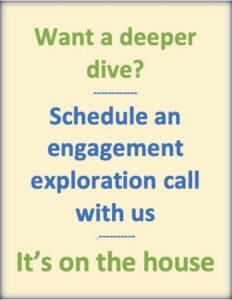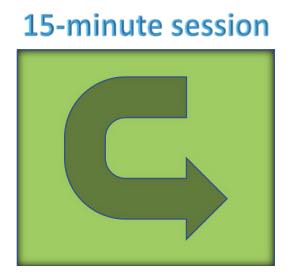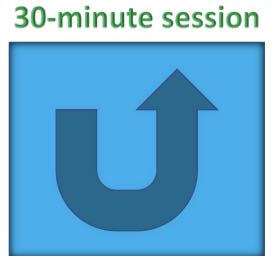The Human View™ Blog

Health as Flow
Mihaly Csikszentmihalyi's important work, Flow, has particular applicability for achieving optimal employee performance. All of us (surely?) want to develop working environments and cultures where employees thrive, where "productivity" includes our people regularly being in a "flow state."
Mihaly defines flow as a psycho-emotional state where individuals are fully immersed in their activities and are sustaining levels of heightened creativity and engagement that outpace competitors. As in athletic and artistic pursuits, getting to that flow state holds immense potential for the business world, especially when integrated with holistic employee well-being strategies.
In The Rise of Superman, Steven Kotler asserts that flow states lead to “near-perfect decision-making.” The implication for business is that, as when athletes push their physical and mental limits, if we can increase the number of moments where individuals are tapping into heightened sensory awareness and mental clarity, we can improve and enhance how our teams work together, strategize, and innovate.
So how can we cultivate flow in our organizations, where employees sometimes meet the daily grind with yet another daily groan? After all, while performance stress can sometimes feel like it's life-or-death, we'd rather it feel more like we're "on." And to get to being more often "in tune," we need ongoing, holistic well-being, which touches not only physical health but also mental, emotional, and even financial wellness.
Flowing into well-being
While Csikszentmihalyi explains that to achieve flow, employees need an environment that minimizes distractions so they can focus entirely on the task at hand, Maslow's take sums it up as " What we can be, we must be." This implies that leaders and managers have to be on the lookout for how employees' unmet - and often unspoken - needs may be showing up: whether they're physical (health concerns), mental (stress or anxiety), or emotional (lack of purpose or engagement).
There are plenty of employee benefit programs out there these days that help support all of those goals and needs. Of course, such programs only "work" if people actually use them. In fact, the trends in employee benefits for 2024 show a continued emphasis on mental health resources, financial wellness programs, and personalized benefits platforms, according to bswift's Future of HR Report. These resources not only support employees but also create the conditions for higher engagement, a critical component for entering flow states.
Carl Jung’s concept of individuation also aligns with this approach. Jung believed that “the privilege of a lifetime is to become who you truly are,” and in a business context, that means supporting employees’ personal and professional development. Companies that provide opportunities for employees to grow—through autonomy, meaningful work, and personal development programs—create an environment where flow can flourish. When employees are encouraged to bring their unique strengths to their roles, they are more likely to experience the deep focus and creativity that comes with flow.
Engagement as the gateway to flow
Engagement is the linchpin that allows all of this to work. Without engaged employees, no amount of health benefits or well-being programs can achieve flow. Engaged employees are fully invested in their work, and they feel a sense of purpose that allows them to focus deeply on tasks. Disengaged employees, on the other hand, are more likely to be distracted, stressed, or uninterested in their work, making flow an unattainable goal. Gallup's 2024 Report states that up to 62% of employees are "disengaged," with 17% being "actively disengaged."
This is where psychographic profiling can play a vital role. Unlike demographic data, which focuses on external characteristics, psychographics delve into employees’ attitudes, values, and motivations. By understanding what drives individual employees on a deeper level, companies can tailor their engagement strategies to align with personal, vocational and even collegial goals to create more meaningful connections between employees, their personal work, and their teams. Psychographic data can also enhance the effectiveness of health and wellness programs by aligning benefits with what employees truly need and value, rather than offering one-size-fits-all solutions.
Why not offer enough variety to support those employees who tend to thrive more in an environment that promotes mental health and mindfulness as well as those who may prioritize financial security and career development opportunities? Psychographics can help blend all of these together, while offering distinct elements that support different employees' desire to drill down to more personal levels. Employees who feel supported in both their professional and personal lives are, understandably, more likely to engage more deeply in their work.
Benefits of organizational flow
Creating a flow-friendly culture has profound business implications. When companies invest in their employees’ holistic well-being and use psychographic insights to foster meaningful engagement, they create conditions for flow. Teams that can enter flow states work together more seamlessly, make better decisions, and align more naturally with organizational goals. The result is higher productivity, more cohesive strategy sessions, and a more innovative approach to problem-solving.
Additionally, companies that prioritize employee well-being and engagement gain a competitive edge in attracting and retaining top talent. As healthcare costs rise—projected by Willis Towers Watson to increase by 7.7% in 2025—businesses that maintain a healthy and engaged workforce may also benefit from greater health plan cost stability.
The last word
To get to flow at an organizational level, we can't just push employees to become more productive. It takes a deeper commitment, one that starts from the broad aspirations of holistic well-being, employee engagement, and personal and professional development. When employees can easily and naturally focus, grow, and feel fulfilled, companies can unlock the latent potential in their teams and gain a significant advantage in today's competitive market. As Jung suggests, the journey toward individuation—the process of becoming one’s true self—can align beautifully with organizational goals. Without that, a company may find itself stuck on the wrong side of the market stature, presence, and profitability chasm.
~ Mark Head
© 2024. All Rights Reserved.
Aspirations
"The cave you fear to enter holds the treasure you seek."
~ Joseph Campbell

Click the green button or the blue button (below) to visit our scheduling pages.




Mark Head
President
With 4 decades of combined experience in employee benefits consulting, wellness and health management, Head brings a unique combination of dynamic perspectives into a clear vision of where the future of health care is moving - and it's moving towards deeper human connection, awareness, and engagement...
Follow Us On
© 2015 - 2025, Benefit Personas, LLC. All Rights Reserved.

